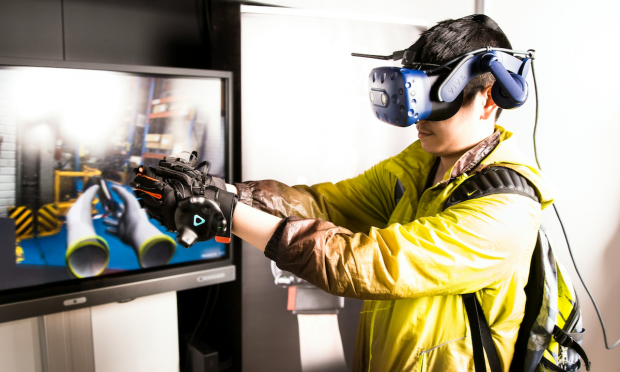
Fundamental to the continued growth of the digital economy is the infrastructure to support it.
Particularly as technologies like mixed reality (MR), virtual reality (VR), extended reality (XR) and artificial intelligence (AI) become a greater part of daily life, there will need to be equivalent advancements in the world’s capabilities across portable compute and wireless connectivity architecture.
It is not a chicken-or-the-egg dynamic of which comes first, it is the simple fact that without a working farm, there can be no livestock at all.
This, as Meta CEO Mark Zuckerberg spent hours with LG Electronics’ top management, including CEO William Cho and Park Hyoung-sei, president of the Home Entertainment Company, on Wednesday (Feb. 28) to discuss synergies between the two firms around next-gen XR device development, such as the Meta Quest 3 headset and Ray-Ban Meta smart glasses.
The conversation, just one stop as part of an Asian tour Zuckerberg is currently undertaking that includes Japan and South Korea, also focused on Meta’s large language models (LLMs) and their potential for on-device AI integration, according to a press release.
Per the same release, the aim of the discussions between LG and Meta is to combine the strengths of both companies across products, content, services and platforms to drive innovation in customer experiences within the burgeoning virtual space.
LG’s leadership envisions that by bringing together Meta’s platform with its own content and service capabilities from its TV business, a distinctive ecosystem can be forged in the XR domain.
Any tie-up between the two global enterprises will be lifted by a new step-up in connectivity technology being highlighted this week (Feb. 27) at the year’s biggest smartphone event, MWC, in Barcelona, Spain.
That technology is being predicted by many in the telecommunications industry to be high speed 5.5G broadband.
Read more: EU’s Connectivity Package Aims to Revamp Telecoms Market
5.5G technology is expected to revolutionize XR, MR, VR and AI by providing several key enhancements over previous generations of wireless technology.
Speaking at MWC, Leon Wang, president of Huawei’s data communication product line, said, according to a news release, that “with the joint efforts of the industry, Net5.5G has reached a consensus on industry standards, key technological innovations and application scenarios.
“It comprehensively supports ubiquitous 10 Gbps connections, elastic ultra-broadband transport, hyper-converged data centers, and autonomous network self-optimization, empowering carriers to upgrade and evolve their networks while driving new business growth,” he added.
So, beyond the technical language, what is so special about 5.5G?
For one, the increased bandwidth. 5.5G offers significantly higher data transfer rates compared to previous generations. This increased bandwidth allows for more data-intensive XR experiences, such as high-resolution graphics and 360-degree videos, enabling more complex virtual environments.
One of the most critical aspects of XR is low latency, which refers to the delay between a user’s action and the system’s response. 5.5G dramatically reduces latency, enabling real-time interactions in XR applications. This is crucial for MR applications like AR, XR and VR to provide a seamless and immersive user experience.
Importantly, 5.5G networks are designed to handle a massive number of connected devices simultaneously. This is important for XR, especially in scenarios where multiple users are interacting within the same virtual space. The increased device density capability of 5.5G ensures a smooth and reliable experience for all users.
See also: What Electric Vehicles, Impossible Foods and Buy Now, Pay Later Teach Us About Early Adopters
5.5G also builds on the concept of network slicing, a capability previously introduced by 5G networks. Network slicing allows operators to create virtualized, dedicated slices of the network for specific use cases. This enables customization of network parameters to meet the unique requirements of XR applications, ensuring optimal performance and quality of service.
Simply put, by providing higher bandwidth, lower latency, improved device connectivity and support for new applications and use cases, 5.5G’s infrastructure improvements will contribute to a more immersive, responsive and versatile XR experience for users across various domains.
Tech and AI companies, like Meta, won’t be the ones responsible for investing in 5.5G capabilities — that falls on telecommunication giants, like LG, as well as national governments in some cases.
But the needs and demands of large customers, like Meta, can and will influence telcos’ strategies toward upgrading their network infrastructure and offerings.